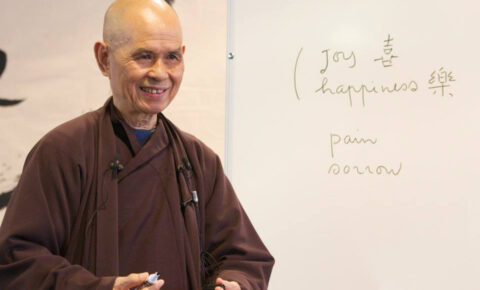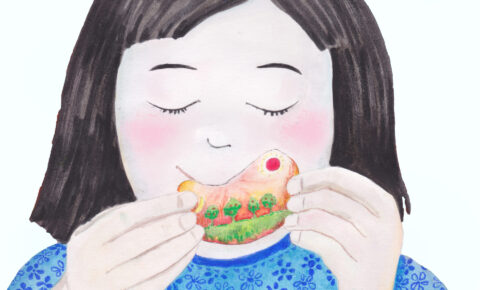A selection of Plum Village practices to keep in your back pocket if you will be spending time with family for Christmas or another holiday.
(We recognize that while the experience of spending time with family is common in countries and cultures celebrating holidays at this time of year, it is not universal, and many people might be practicing with loneliness)
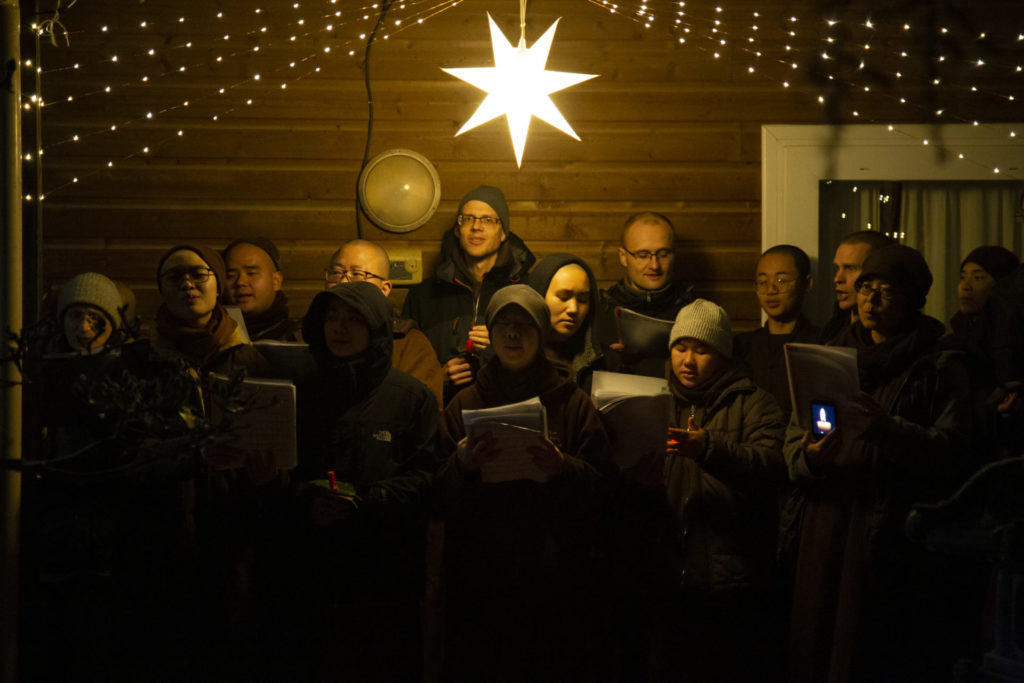
1. Find a secret mindfulness bell
In certain places such as the dining halls at Plum Village monasteries, chimes are programmed to sound every 15 minutes. It’s quite an experience when a chattering dining hall falls silent at the sound of one of these chimes as everybody takes a moment to stop and connect with their bodies, their breathing, and the present moment. After this short pause, things continue as they were. The chimes are one example of a “mindfulness bell”, a reminder to come home to ourselves.
Sometimes the moment of stopping brings attention to how a conversation has started to become heated, or somebody realizes that, actually, they are quite tired and the best course of action to take care of themselves is to go and rest. The collective practice of stopping can be invaluable.
Every time we hear the bell, we stop talking, stop our thinking, and return to ourselves, breathing in and out, and smiling. Whatever we are doing, we pause for a moment and just enjoy our breathing. Thich Nhat Hanh
This might not be a practice your family is happy to adopt, and it is not as easy to stop without the support of everyone else doing the same thing, but it might still be possible to try a stopping practice this festive season. Nobody else needs to know what your mindfulness bell is, maybe it’s when the commercials/adverts appear on TV, or when a certain word or phrase is spoken, or maybe your device can subtly vibrate at certain intervals. Whatever it is, when you are aware of your mindfulness bell, it can be a moment to reconnect with yourself in the midst of whatever is happening.
2. Eat mindfully (as best you can!)

Mindful eating is another mindfulness practice that is easier to do with others. Attempting it over the festive period might be a case of mindful eating in “hard mode”, but why not try? Every mouthful eaten with awareness can be seen as a little victory.
Whether it’s chocolates, snacks, or meals with others, mindful eating means being aware of the sensations in your mouth as you chew. It can be a chance to savor each mouthful a little more. We can become aware of our habitual tendency to grab the next chocolate or prepare the next forkful while still chewing the previous one. There’s no need to be critical of yourself for doing this, it’s very natural. But it can be interesting to try something different, like putting the fork down and being as present as possible with the food in your mouth, when that feels possible.
My experience of taking the extra piece of Christmas pudding (because I really like it) brought me to savoring every bite. I realized I enjoy it so much that I eat it quite fast. I’ve eaten one piece, and it’s gone so quickly that I want to have more enjoyment so I take another piece and maybe another piece. But if I really enjoy every bite, every mouthful, savor it, I notice I may have two pieces instead of three and then I can have another piece the next day. Sister Jina
If you would like to get some practice in advance you could try this tangerine meditation:
Tangerine Meditation 4:11
3. Recognize the good in people
There is a Plum Village practice called “flower watering”, it involves noticing and expressing the positive qualities we find in others. It’s named that way because this appreciation can help people to bloom.
Always speak the truth. This is not a time for flattery. Everyone has strong points which can be seen with awareness. Sister Anabel
This might be something you can causally incorporate into your interactions over the festive period. When you see examples of people’s good qualities, mention them. It can also work as an internal practice, particularly with people we find difficult. It’s not about bypassing the problems but instead compensating for our brain’s negativity bias to create a wider perspective that also has space to recognize their goodness.
[Note: there might be people for which it’s not appropriate to attempt this practice towards. Use your discernment and look after yourself.]
4. Soften around your views
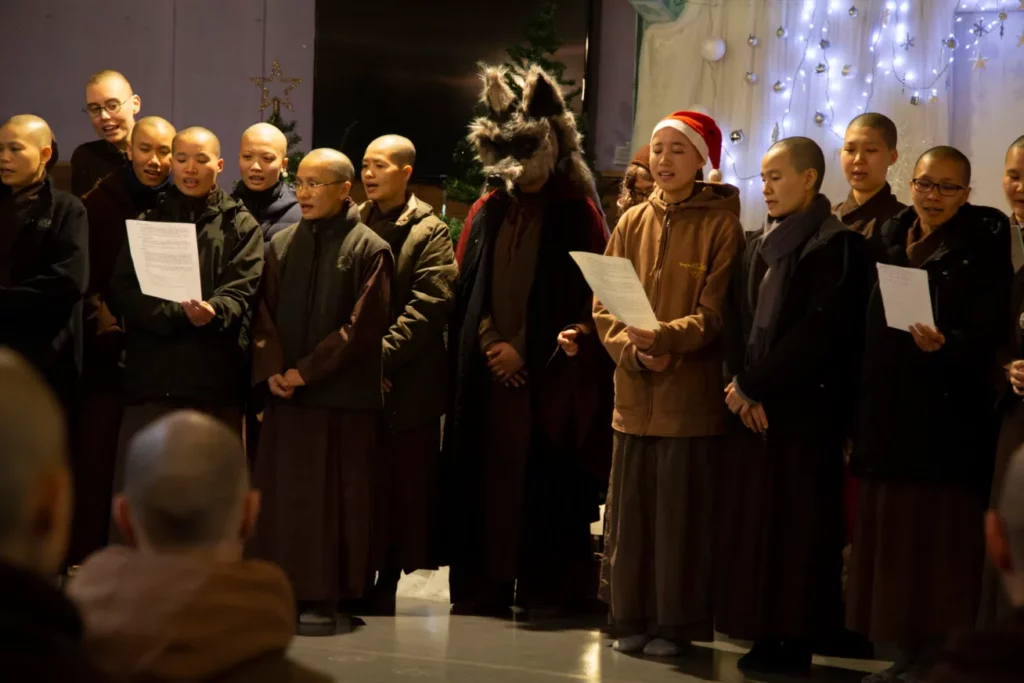
The practice of “letting go of views” is a deep one. Maybe, this festive period, a starting point might be softening around your views.
What might this look like? It could be becoming aware of our opinions, beliefs, and convictions which we have a sense of tightness around. A clue to this would be if someone has a different option, do we suffer? Softening around these views might involve:
- mindfully noticing our thoughts and emotions around these views
- becoming aware of any tendency to try and change people’s minds, and maybe even choosing not to
- Becoming aware of any judgment and condemnation we have towards people with different views and seeing if it’s possible instead to become curious about how and why they came to see things as they do
It requires a lot of practice to sit there and listen, and not judge so you can understand. Brother Phap Dung
5. Go and find a tree
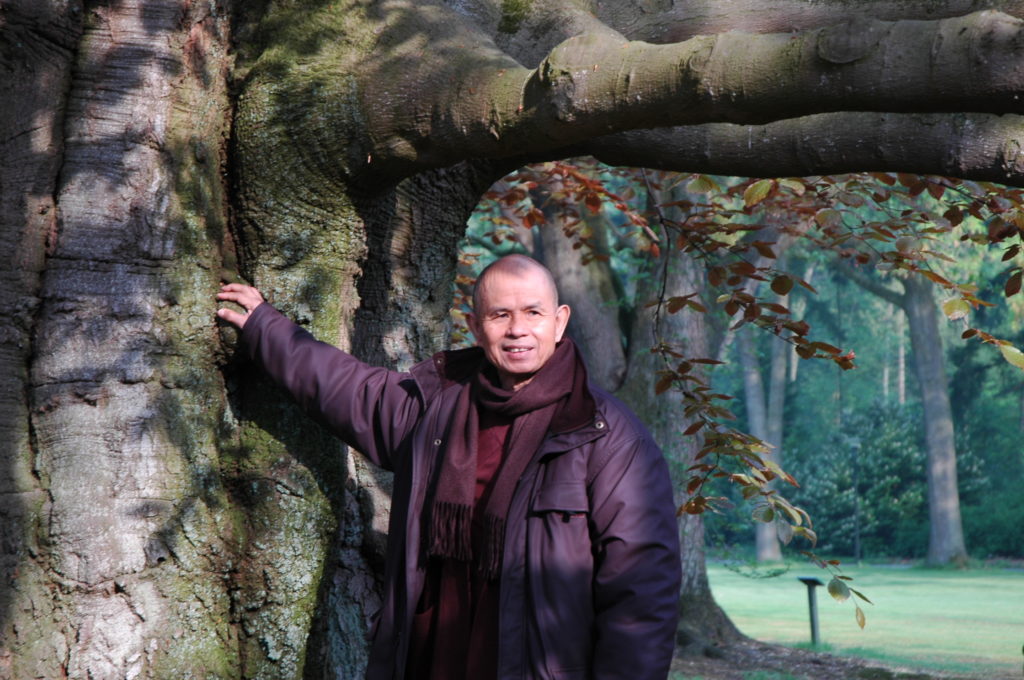
The environment that we are in can affect how easy it is to be mindful. You might find yourself in a crowded, busy, distracting house. Why not change it up and escape for some moments to whatever nature it is possible to find nearby? A tree could be your sangha buddy, a calm stable presence to help you come back to the present moment and to restore and re-balance yourself.
In winter, when the branches are bare, the tree continues to stand tall, so strong and beautiful, harboring life deep inside. Thich Nhat Hanh
And of course, going out to find nature is the perfect opportunity to practice walking meditation:
When walking you just walk, giving one hundred percent of your awareness and attention to your walking. In this way, you will be present for the ground beneath your feet, for the plants in front of you, the clouds above you, and the people around you. Thich Nhat Hanh in Love Letter to the Earth
6. Look after your inner child
Many of us will spend this festive period with people we grew up with, some of us in the homes we grew up in. According to Thay, “In each of us, there is a young, suffering child”, and in these circumstances, certain words or actions from others might make us aware of this suffering child.
This is an opportunity to embrace our inner child with tenderness and care rather than attempting to avoid what we are feeling or admonish ourselves for feeling it. Maybe that looks like taking some moments to ourselves and practicing belly breathing whilst lying down.To practice belly breathing, lay down on your back, place your hands on your abdomen, and become aware of the movements of your stomach as you breathe in and out.
You could then see if it’s possible to listen to what your inner child wants to tell you and to speak to your inner child reassuringly, letting them know that as an adult, you no longer need to fear the way you did as a child.
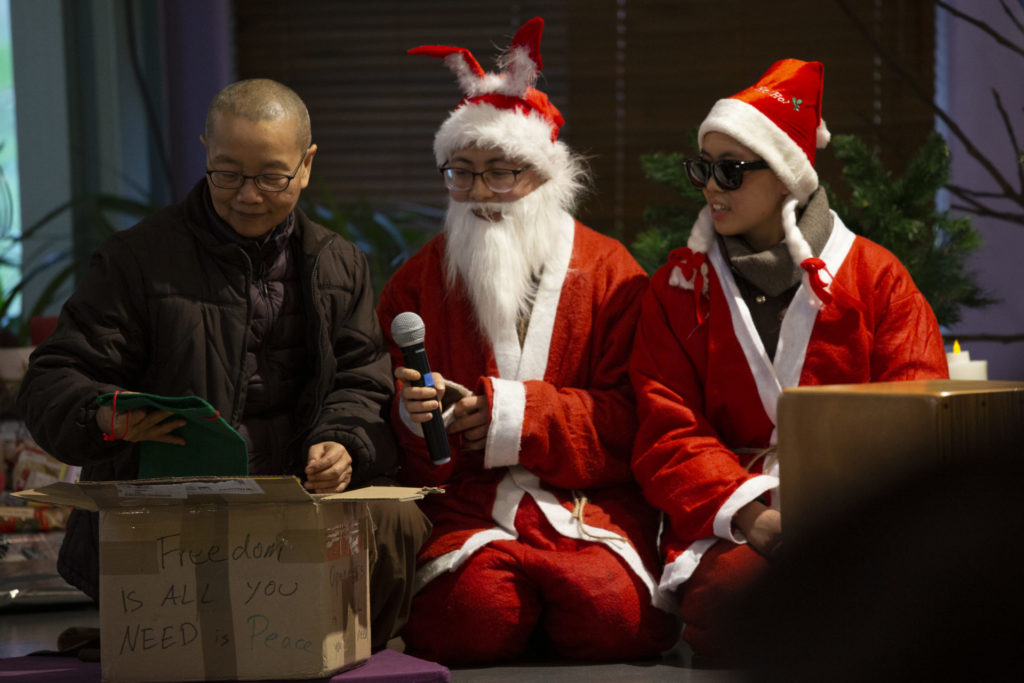
7. Spot the second arrow
The Buddha gave the (very painful) metaphor of the second arrow. If we are hit by an arrow, and then a few minutes later we are hit in the exact same spot by a second arrow the pain will increase manifold. Something can go wrong, cause us to suffer, and then we can add on a whole another layer of anger, blame, or self-judgment. That is the second arrow.
The first arrow is the painful experience. The second arrow is the suffering that comes from the mental anguish we add to the initial painful experience. Mitchel Ratner (lay Dharma teacher)
If, for example, we eat too much and feel physical discomfort as a result, we might start criticizing or even hating ourselves as a second arrow. So be vigilant for second arrows, and, if you notice one, try to hold it with a kind mindful awareness. As you breathe in and out and simply notice that it is there, it might start to loosen and shift.



